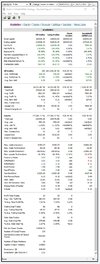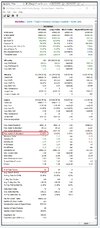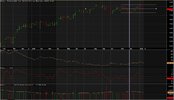- Joined
- 13 February 2006
- Posts
- 5,490
- Reactions
- 12,998
For those who are aware of or follow Lyn Alden's research and commentary, her January newsletter is just spot on, great read.
I would certainly agree that her research is good.
A topic that she hasn't touched on however, the withdrawal of QE (Taper) on stonks.
QE is the purchase of $120B/month of bonds/MBS from commercial banks. The money the banks use to purchase Treasury debt and/or grant mortgages is created ex nihilo. This 'money' (fiat currency) sits on the liability side of the bank's balance sheet. The purchased asset, on the asset side of the balance sheet. When the asset is sold to the Fed. the bank's ledger at the Fed is credited with the sale price (at par) of the bond.
This asset can be drawn down, which it is, and a purchase of a new asset stonks, replaces the sold bond on the bank's balance sheet as an asset balancing the liability of the cash created originally.
That is $120B/month of equity (mortgage) support that goes to zero in Fed. 2022.
As Ms Alden indicates, the US economy has been financialised over a number of decades, ie. the stonk market is the economy.
If the stonk market declines by (pick a number) 20%, what will the Fed do?
(a) Nothing and continue to raise rates;
(b) Re-instigate QE, lower rates back to ZIRP and in real terms deeply NIRP?
Both answers result in chaos.
(a) Results in mass bankrupticies, and massive deflation a la 1930's style of corporations and eventually the government, which cannot pay its liabilities outside of currency creation. This inflationary pressure offsets to a degree the deflationary pressures.
(b) Results, eventually in the (hyper) inflationary destruction of DXY and by extension, all other fiat currencies.
I 'think' the Fed will choose (b). Either choice is horrible.
jog on
duc






